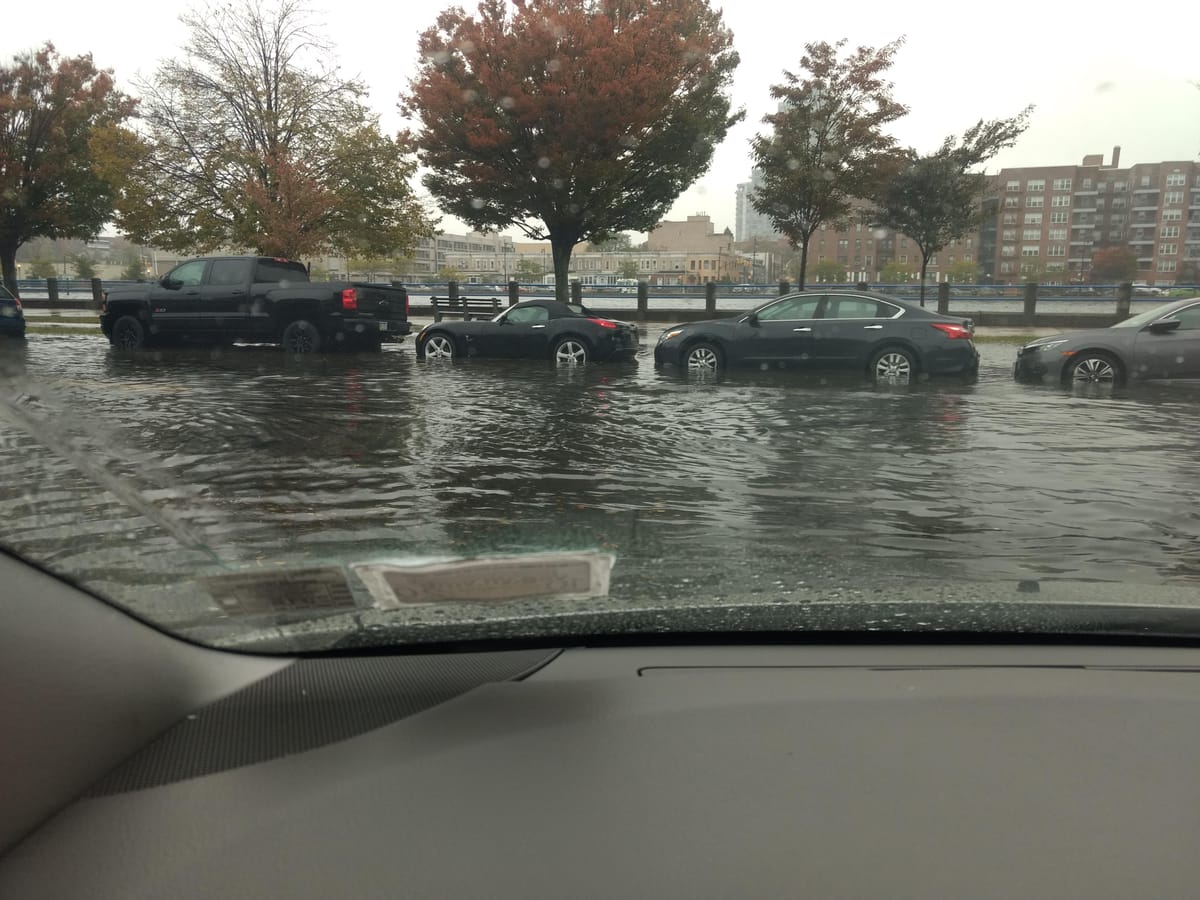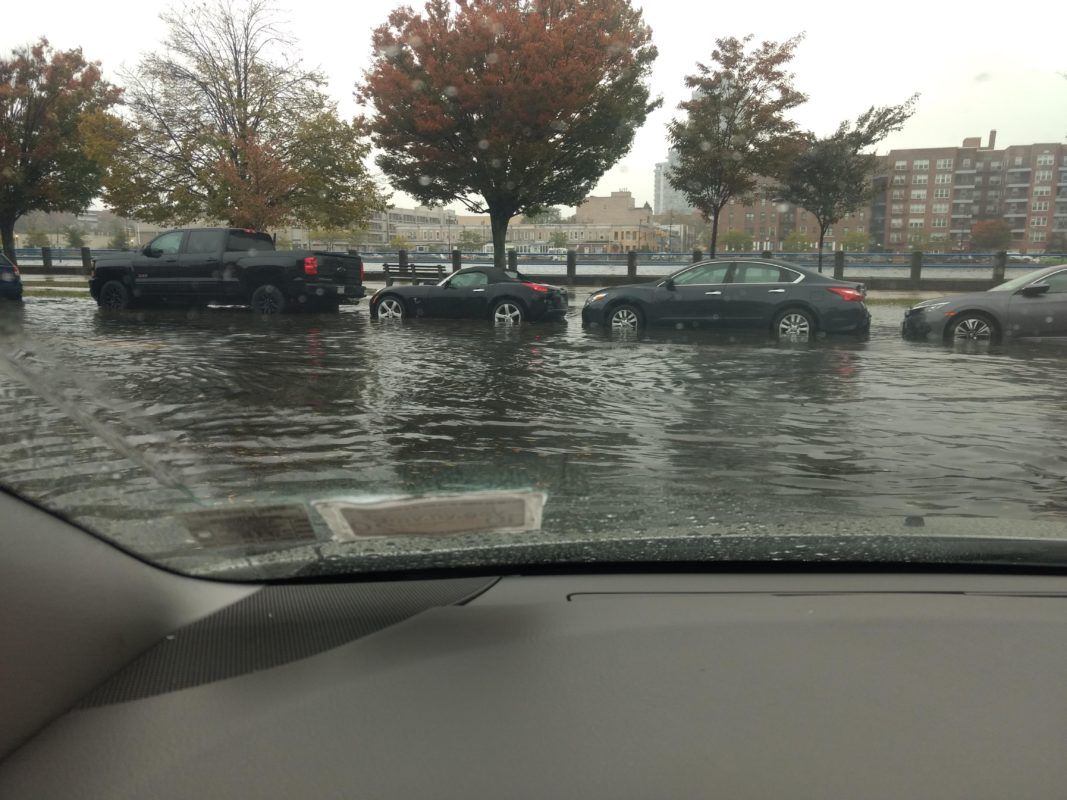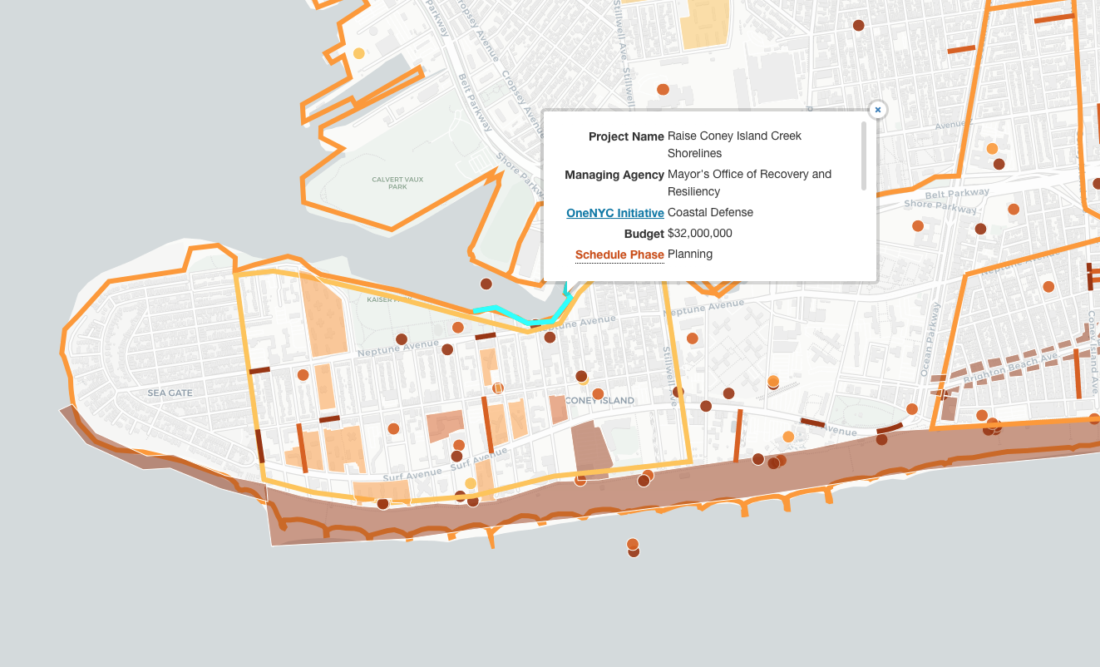6 Years After Sandy, Brooklyn Still Vulnerable To Storms


Hurricane Sandy slammed into New York City six years ago Monday, causing 43 deaths and $19 billion in widespread devastation from which the city has yet to completely recover.
For many residents of southern Brooklyn from Sheepshead Bay to Gowanus, the mild flooding this weekend renewed serious worries about how vulnerable they may to another storm.
https://twitter.com/benduchac/status/1056211599105712129
Residual flooding at Caesars By Brooklyn from yesterday’s storm pic.twitter.com/XvNMPsDiqM
— Shane Blodgett (@Aplomadokestrel) October 28, 2018
Here's a look at the #flooding on the NB BQE at Cadman Plaza in #Brooklyn. The right and center lanes are affected, but passable. #NYCTraffic #traffic #BQE @wcbs880 pic.twitter.com/GqHTuMePJ8
— WCBS 880 Traffic & Weather together on the 8s (@wcbs880traffic) October 27, 2018
There appears to be much work left to be done in vulnerable spots to fully prepare Brooklyn for another Sandy-like superstorm.
CONEY ISLAND CREEK
A major source of flooding during Sandy was Coney Island Creek. In 2016, the city completed a resiliency study on the area. The website for OneNYC, a program intended to help map out the city’s future plans, indicates plans to raise the creek’s shoreline but no active project.

The city also has a $47 million plan to finally rebuild the wall protecting Coney Island Creek, despite community worries it may not protect from Sandy-level superstorms.
CONEY ISLAND AND SHEEPSHEAD BAY WATERFRONTS
Since Sandy struck, a lot of work has been done on the beaches along Coney Island. The OneNYC website says over 600,000 cubic yards of sand have been placed on the beach to prevent erosion and protect from storm surge.
A study last year by the Waterfront Alliance found 80,900 residents of Coney Island and 36,600 residents of Sheepshead Bay have a 50% chance of losing their homes to flooding by 2060.
The Sea Gate Reach, completed in 2016, was the last stage in a two-decade project intended to protect the shoreline of that neighborhood on the island’s west end.
But residents are still not convinced.
“I was walking through the district today, the people are still saying how vulnerable they feel,” Mathylde Frontus, a candidate for New York Assembly District 46, told Bklyner Monday.
“A lot of the homeowners in Sea Gate and elsewhere are still not back home. They’re still rebuilding,” she said.
Frontus said Sea Gate and Coney Island citizens’ wish list included a bulkhead and a study by the Army Corps of Engineers to address further needs.
She added many residents were concerned after the flooding this weekend.
“That’s part of the problem — that’s the vulnerability that I’m talking about,” she said. “It’s an ongoing project for people to have the peace of mind that they’d like to have.”
Steven Saperstein, a Republican running against Frontus, told Bklyner he also supported widespread work to improve the infrastructure, including “levees, tide gates, raised roadways and improved drainage.”
“I would prefer that we over-prepare,” he wrote to Bklyner in an email, also mentioning that many homeowners have still not returned home after six years.
Saperstein also called out New York City for not adequately responding to south Brooklyn’s needs.
Frontus said she agreed with her opponent’s take, and that the process of actually doing the work required to completely prepare the Brooklyn waterfront is complicated.
“The process it seems is one of twists and turns,” she said. “We’re not ready, that’s just the short of it.”
GOWANUS CANAL
Massive flooding around Gowanus Canal during Hurricane Sandy led to widespread fears of contamination from the Superfund site.
Residents still experience occasional flooding, leading to worries of whether the same thing could happen again.
The OneNYC website indicates ongoing projects to flood-proof the moveable bridges along the canal, flood-proof a pumping station at Nevins Street and “high level storm sewer installation and water main replacement” across many blocks. But none of these projects are complete.
City Councilmember Brad Lander declined to comment directly, but his office pointed to a Medium post he wrote Monday to mark Sandy’s 6th anniversary.
While calling for widespread actions related to climate change, Lander wrote, “We are nowhere near to responding on the scale of the collective, existential crisis we face.”
Hurricane Sandy made landfall in NYC 6 years ago today. Join @NYRenews & me in our work to combat climate change, get New York on a path to 100% renewable energy, retrofit dirty buildings, build a more resilient city, and — yes — get rid of plastic bags. https://t.co/IlEgrODFxb
— Brad Lander (@bradlander) October 29, 2018
John Quaglione, a spokesperson for Republican State Senator Marty Golden, told Bklyner that communications between officials have been greatly improved since Hurricane Sandy hit in 2012, meaning a more efficient response next time, but stressed there is still work to do along the coast.
“We must continue to invest in shoring up our coastline, including the Belt Parkway, to protect us in the event of future storms,” Quaglione said in an email. “There also needs to be an investment made in guarding our energy sources against the threat of natural disasters.”
Andrew Gournardes, the Democrat challenging Golden in next week’s election, said Brooklyn is still way behind where it needs to be and said Golden had not focused enough on climate change.
“Senator Golden and the Republican controlled State Senate haven’t done nearly enough to combat climate change and its effects,” he told Bklyner in an email, adding that “our beautiful shoreline communities such as Bath Beach, Manhattan Beach, and Gerritsen Beach are sitting ducks.”
Congressman Hakeem Jeffries, a Democrat who represents much of the affected parts of the Brooklyn waterfront, insisted that federal representatives are on the case.
“The entire congressional delegation has worked tirelessly to bring home billions of dollars in federal funding for our recovery efforts, ensuring we can help those who lost everything in the storm and providing crucial resources and equipment our first responders need to keep us safe in the event of future natural disasters,” Jeffries said through a spokesperson.
The office of Republican Dan Donovan, whose district stretches into southwest Brooklyn, stressed Donovan’s efforts encouraging further research to protect the New York and New Jersey harbors and pushing legislation reforming the process of getting federal disaster relief.
“His dedicated staff has worked with hundreds of homeowners on cases involving the recovery process from rebuilding to flood insurance and continues to do so until this very day,” spokesman Anthony Cruz said in a statement.




